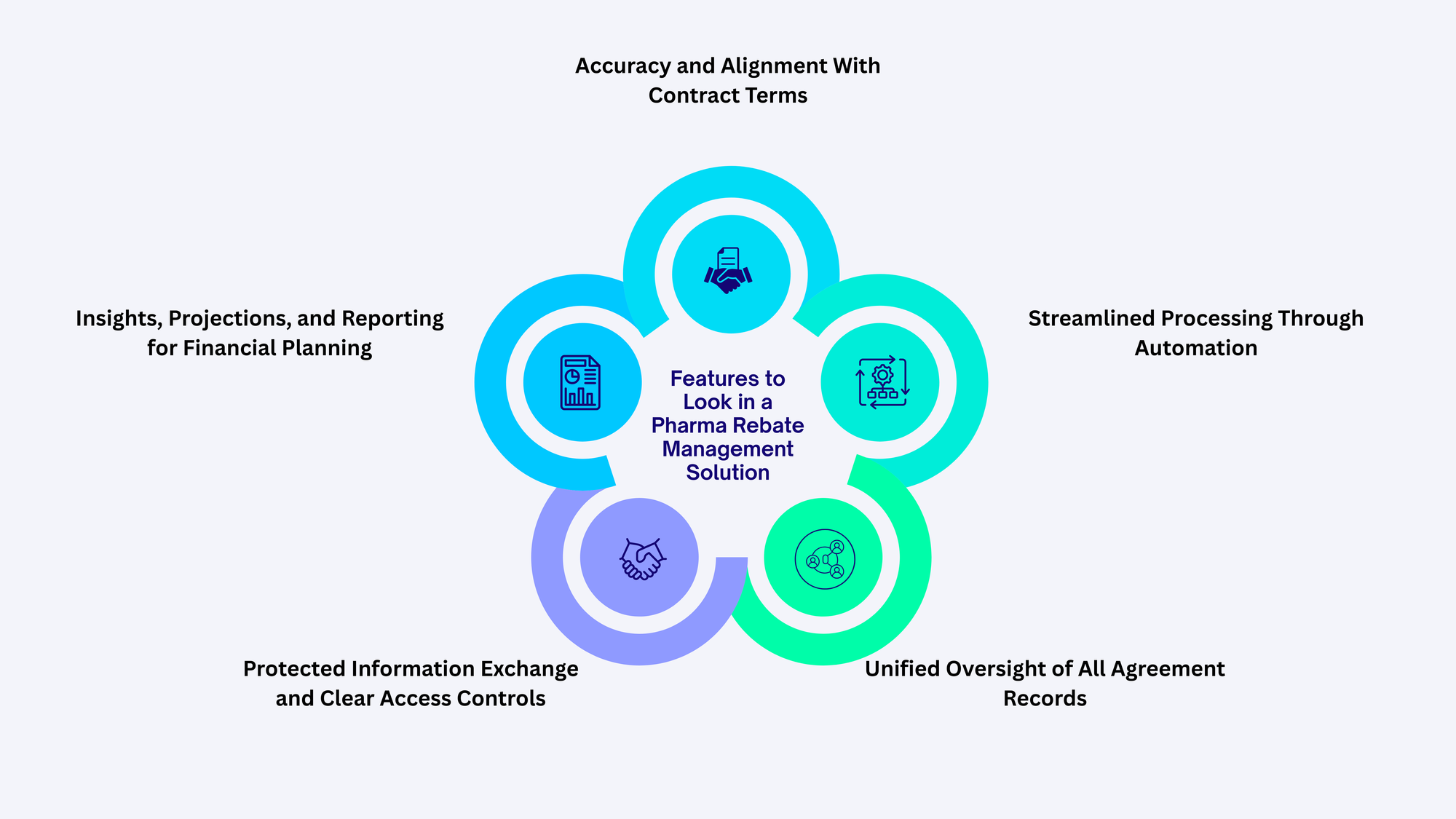How to Choose the Right Pharma Rebate Management Solution?

Selecting the right rebate management solution has become a priority for healthcare payers, systems, and organizations handling complex pharmaceutical agreements. As rebate structures grow more intricate and the administrative workload increases, a well-chosen platform can support financial stability while helping maintain patient access to crucial therapies. The right system not only simplifies rebate handling but also supports accurate tracking, timely claims, and better visibility across departments.
Table of Contents:
- The Rising Demands of Rebate Administration
- What to Prioritize When Reviewing Pharma Rebate Platforms?
Jump to a section that interests you, or keep reading.
The Rising Demands of Rebate Administration
Rebate models in the pharmaceutical market are rapidly shifting toward structures based on value, outcomes, and performance. These modern agreements require precise monitoring and timely actions. Traditional processes—often manual and spreadsheet-driven—struggle to keep up, exposing organizations to errors, missed opportunities, and unnecessary financial loss. This has pushed payers and providers to look for updated solutions that offer automation, clarity, and room to scale as rebate models continue to change.
What to Prioritize When Reviewing Pharma Rebate Platforms?

1. Accuracy and Alignment With Contract Terms
Accurate rebate calculation and claim submission are fundamental. Many organizations lose revenue because of incorrect tracking, overlooked deadlines, or limited visibility into agreement terms. A suitable platform should include real-time monitoring, built-in validation checks, and automated claim submissions. These elements help maintain alignment with contract requirements while minimizing the risk of financial leakage.
2. Streamlined Processing Through Automation
Manual processing requires time and significant staff involvement, and it increases exposure to human error. Automating core tasks—such as data entry, mapping, reconciliation, and dispute handling—can reduce workload and speed up rebate cycles. A strong solution should support smooth, automated workflows that reduce repetitive steps and cut down on resource strain.
3. Unified Oversight of All Agreement Records
Organizations often deal with numerous agreements spread across manufacturers, products, and therapeutic areas. A centralized system provides a structured place to store and manage all terms, updates, claim histories, and invoicing records. This unified setup improves access to information, lowers the risk of oversight, and helps different teams work with consistent and up-to-date contract details.
4. Protected Information Exchange and Clear Access Controls
Rebate administration relies heavily on coordination between payers, manufacturers, and internal teams. The solution should support protected data exchange while meeting privacy requirements. Features such as role-based access, encrypted transmission, and clear audit trails help safeguard sensitive data and ensure that only the right users see the right information.
5. Insights, Projections, and Reporting for Financial Planning
Beyond tracking and claims, organizations need visibility into trends and future expectations. A strong rebate platform should offer dashboards, financial modeling tools, and historical comparisons. These insights help support planning, budgeting, and contract discussions while giving teams a clearer view of how rebate performance may shift over time.
Conclusion
A well-chosen pharma rebate management solution helps organizations stay organized, reduce avoidable losses, and respond with confidence to increasingly complex agreement structures. By focusing on accuracy, automation, centralized oversight, secure collaboration, and analytics, payers and healthcare systems can maintain stronger control over rebate performance and support timely, reliable financial outcomes. With the right platform in place, rebate processes become clearer, smoother, and better aligned with both operational needs and long-term financial goals.
